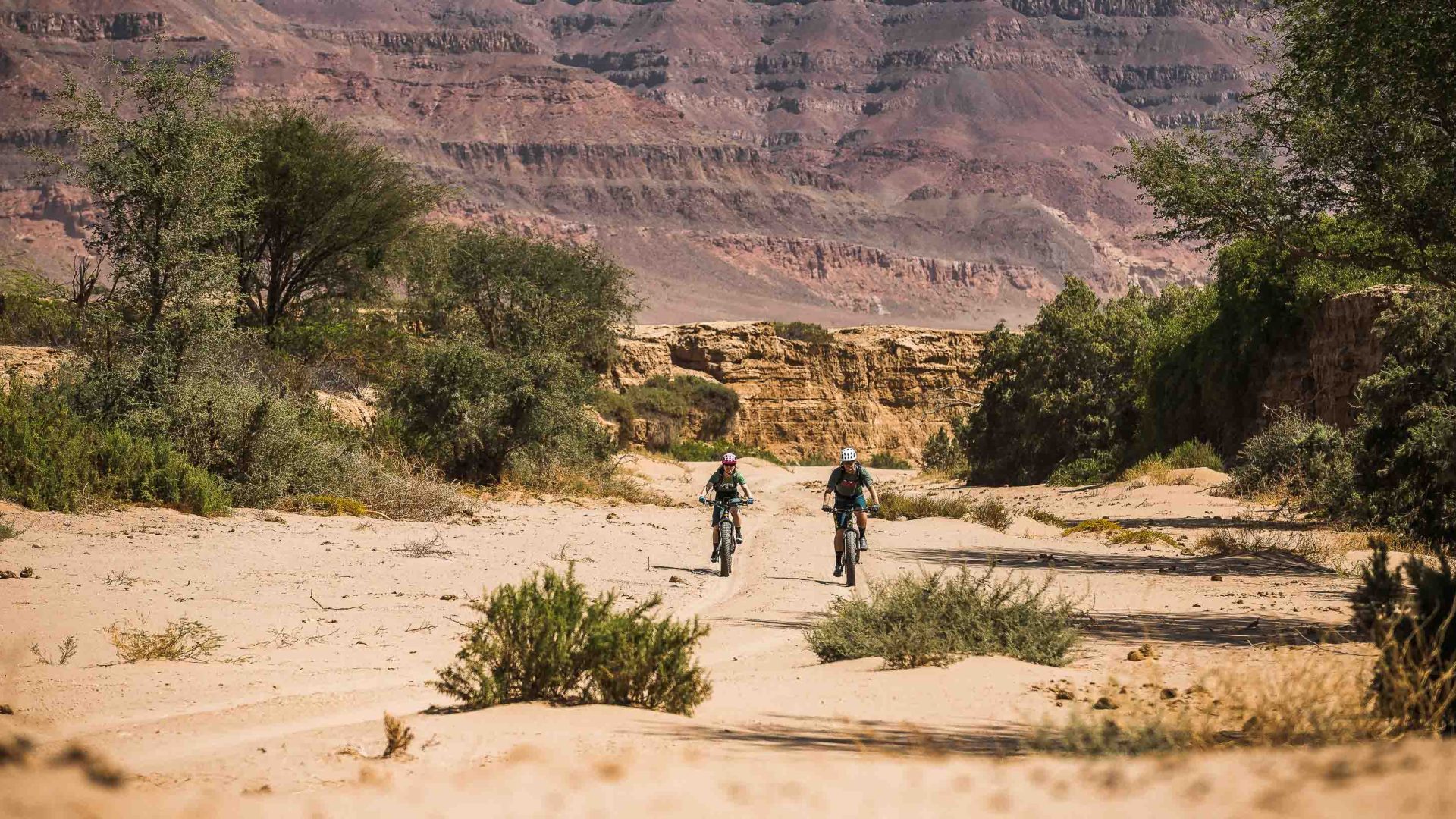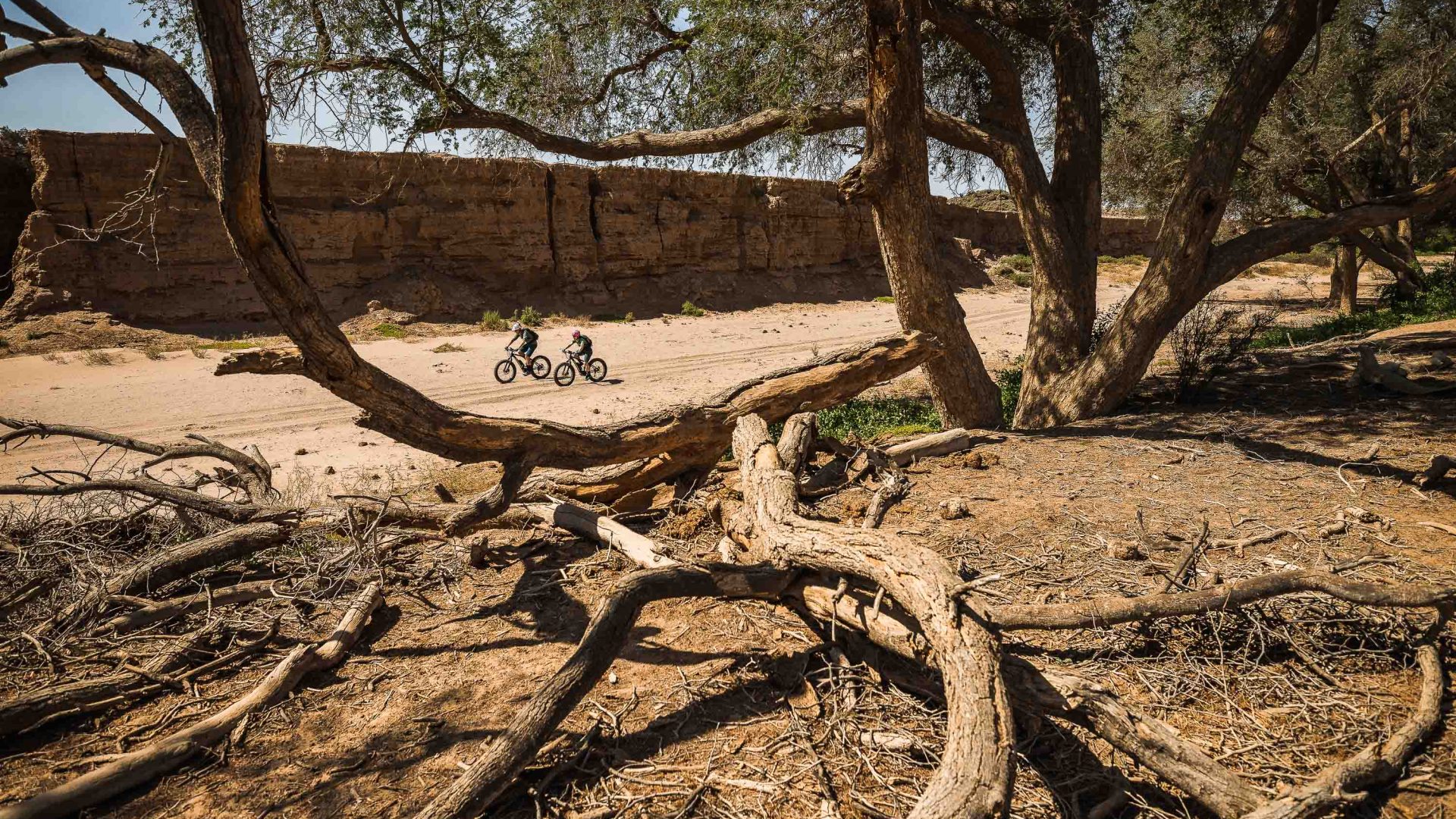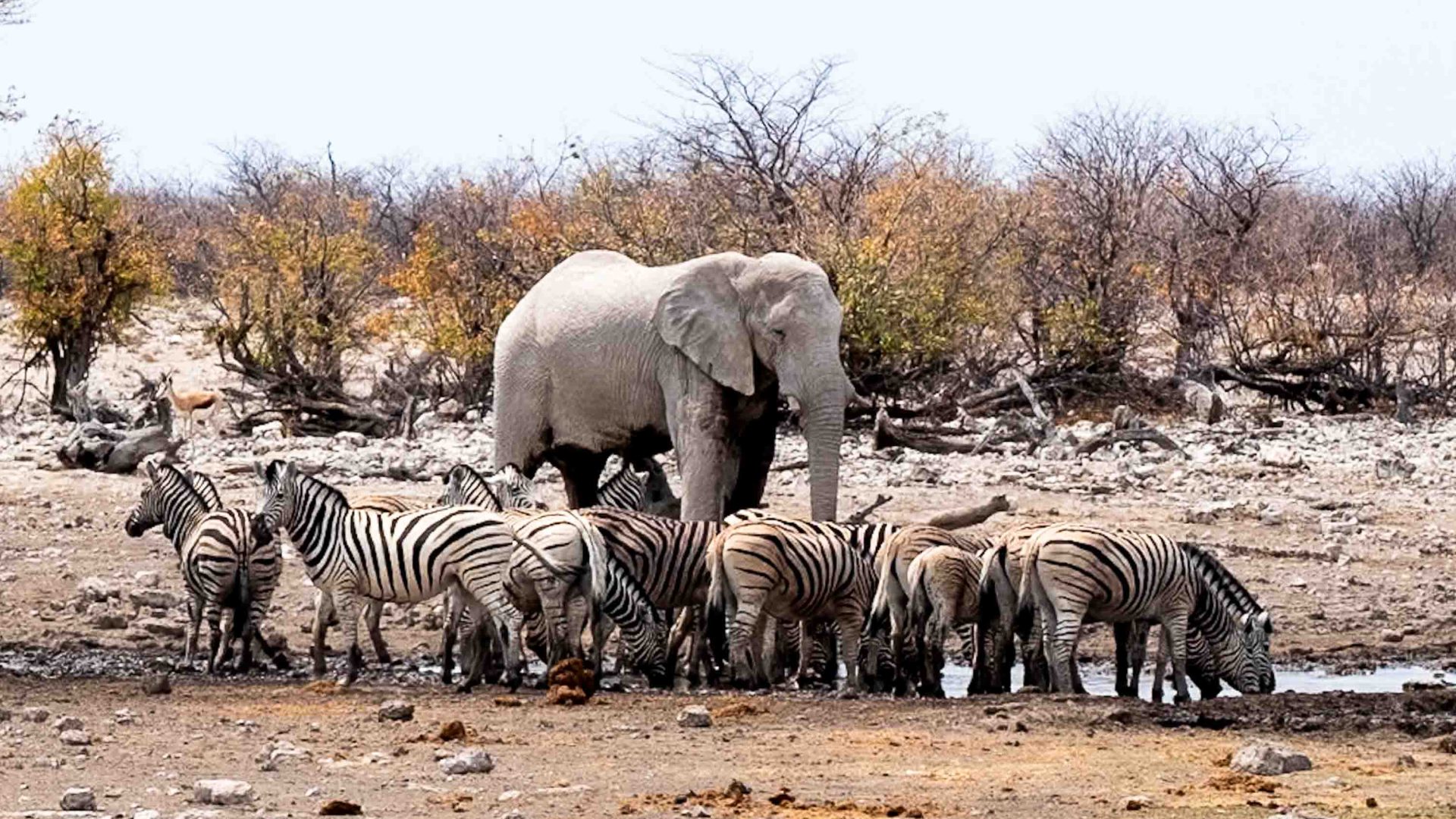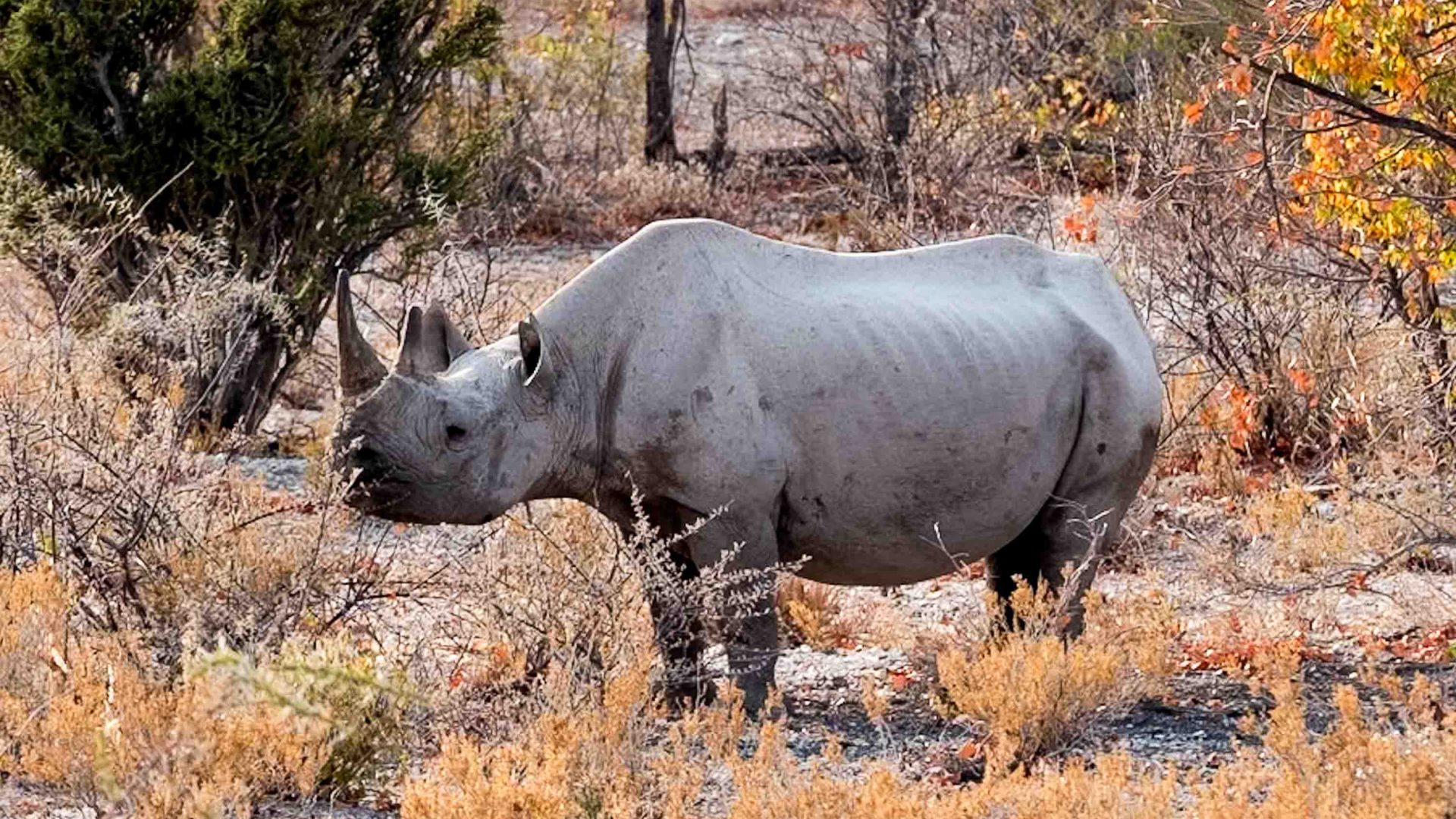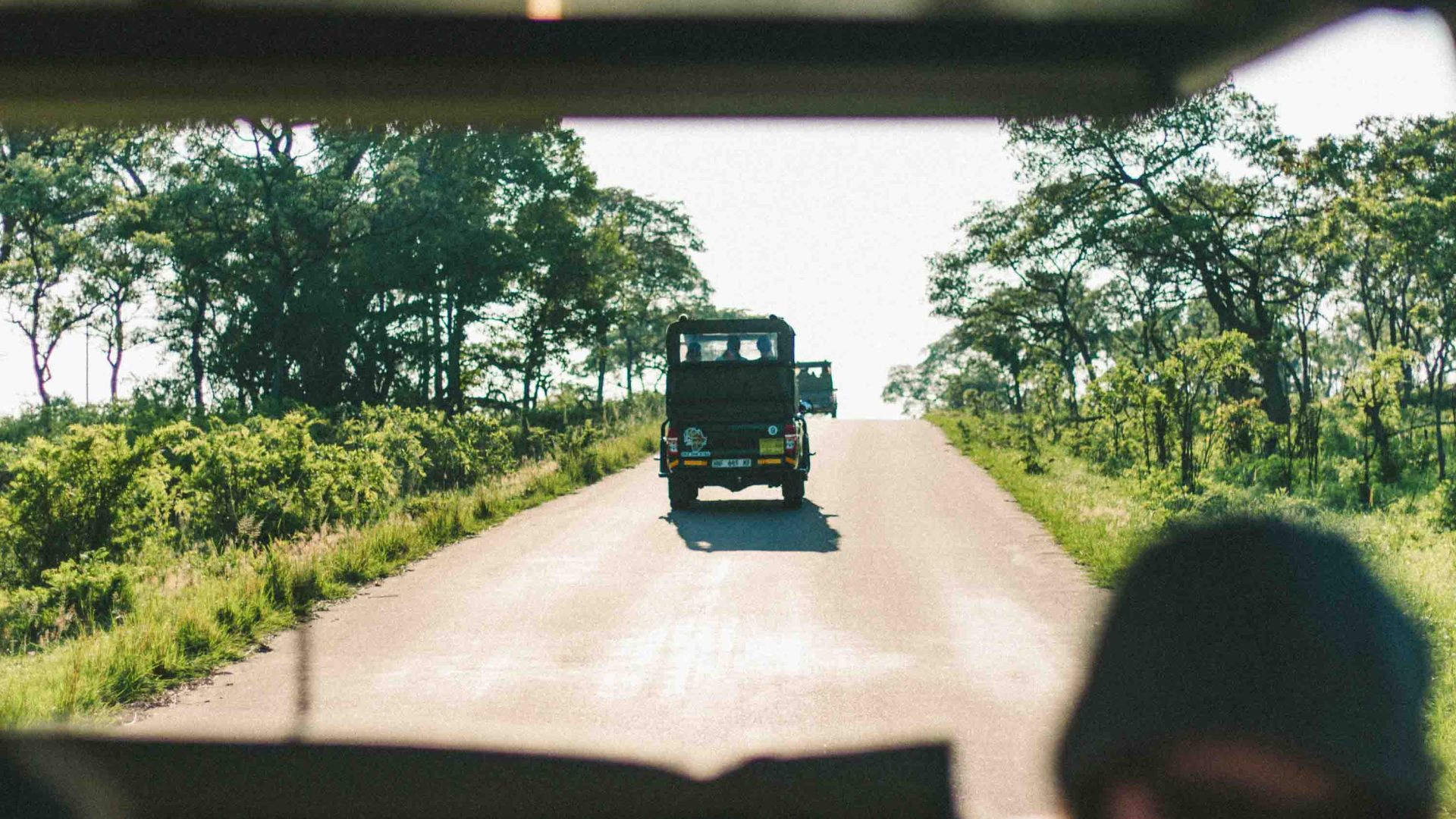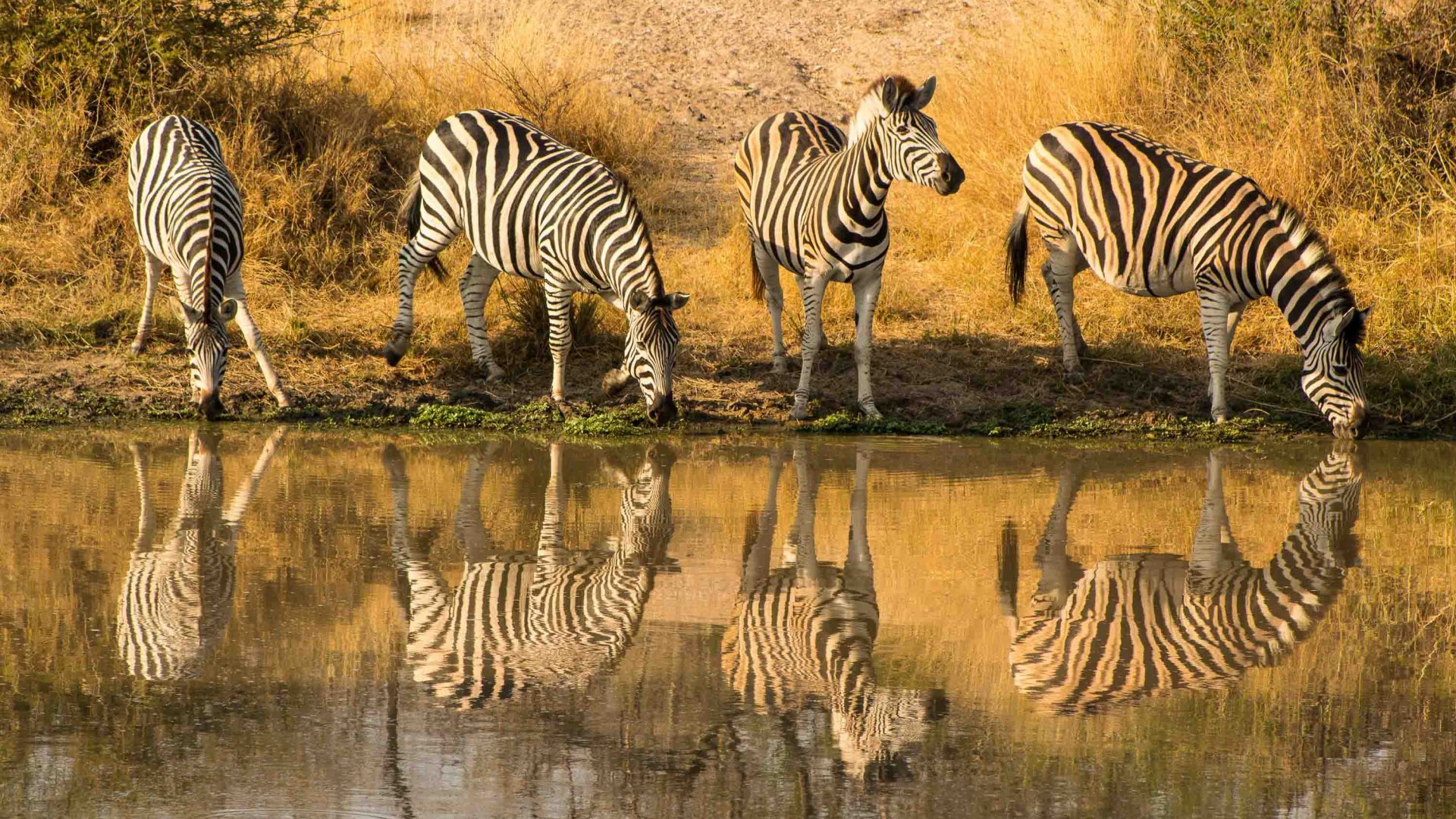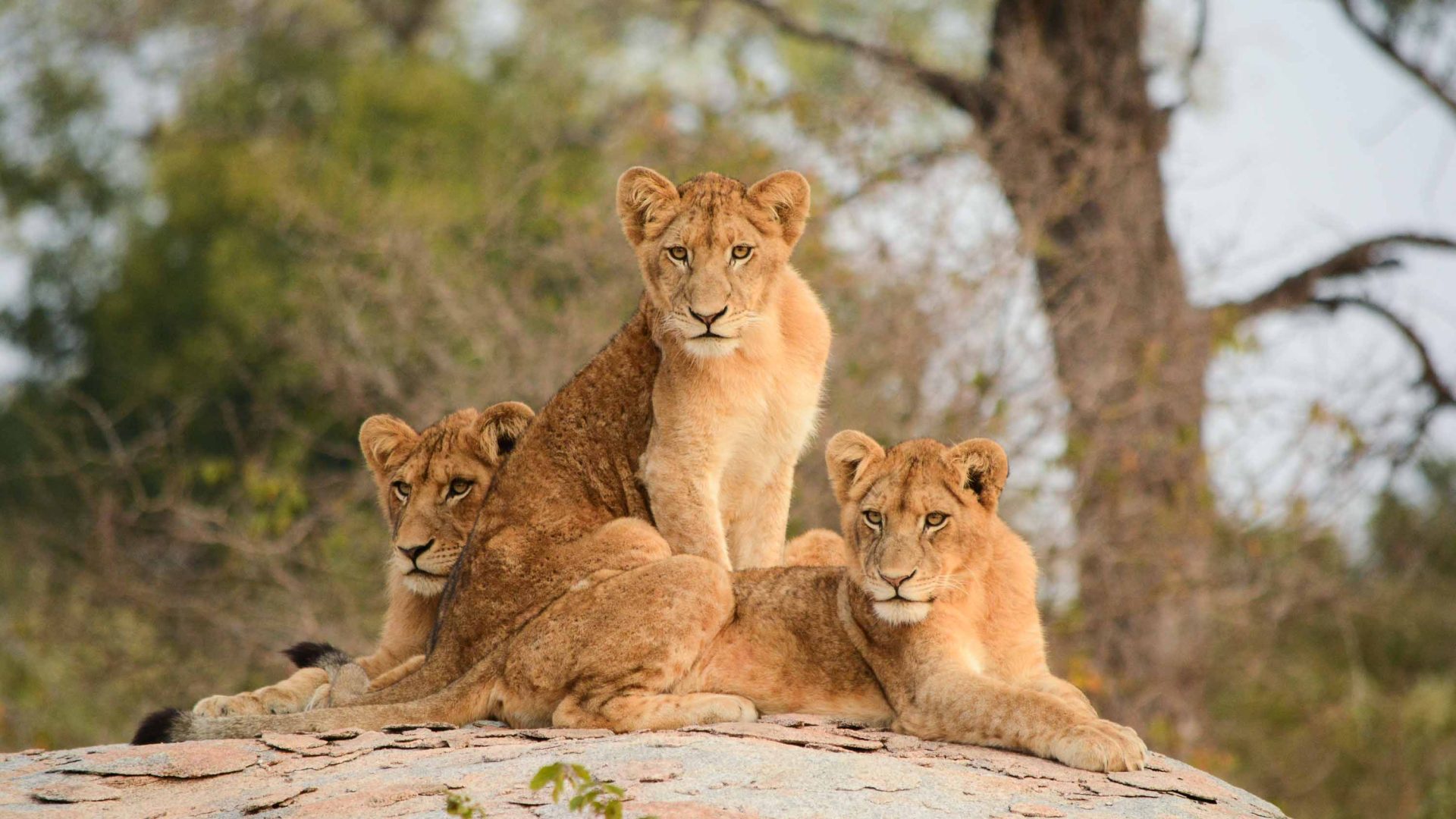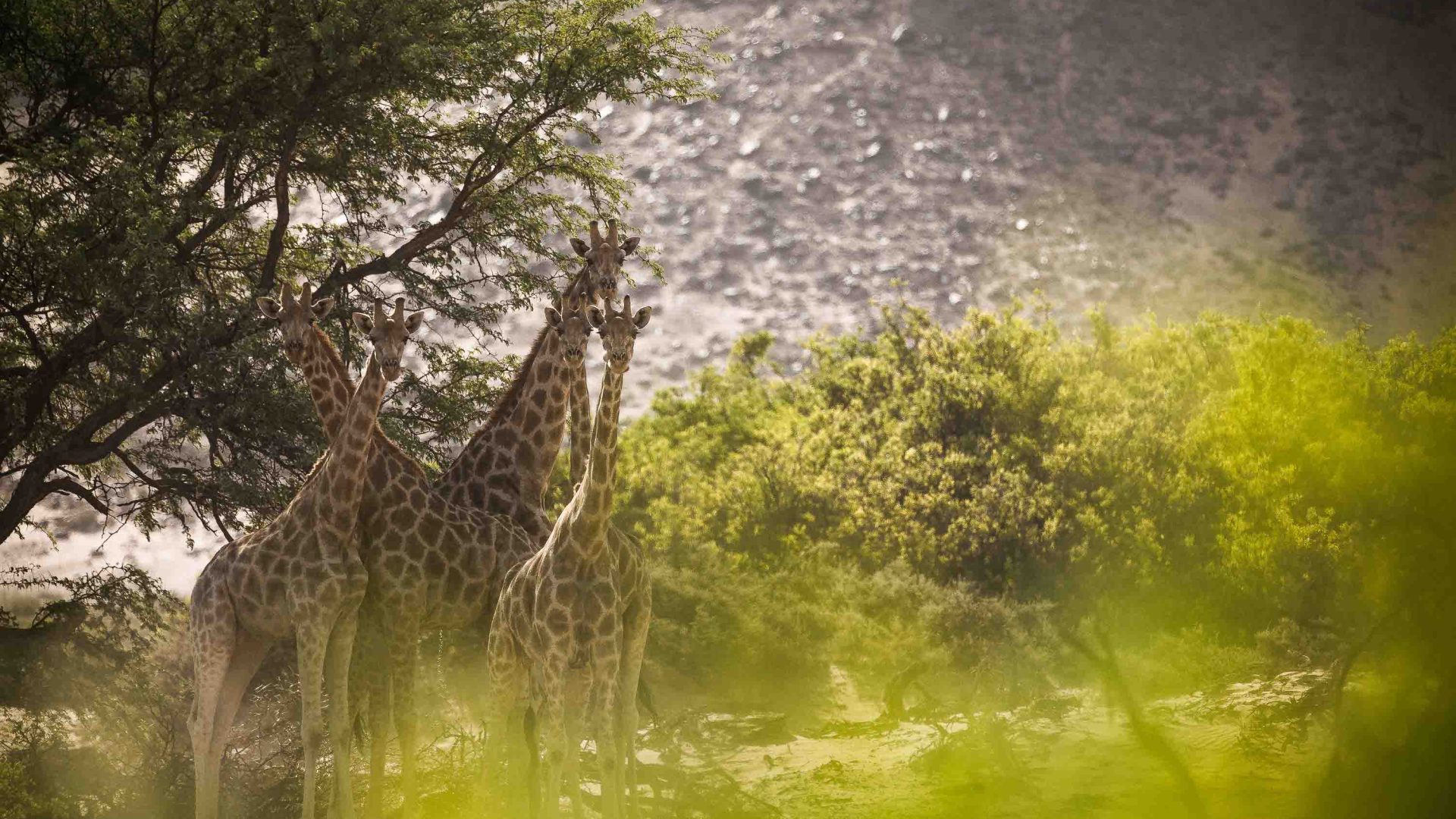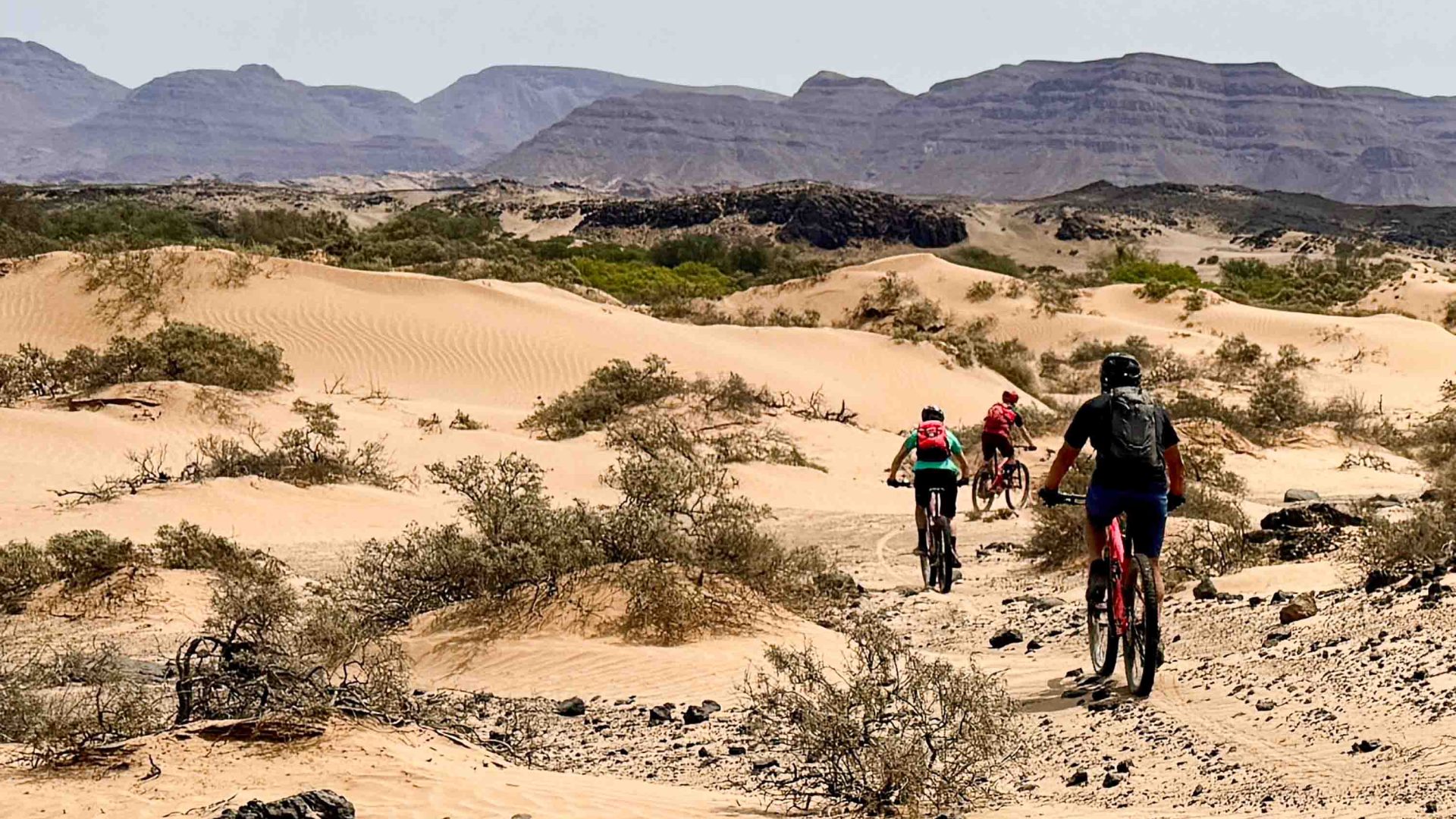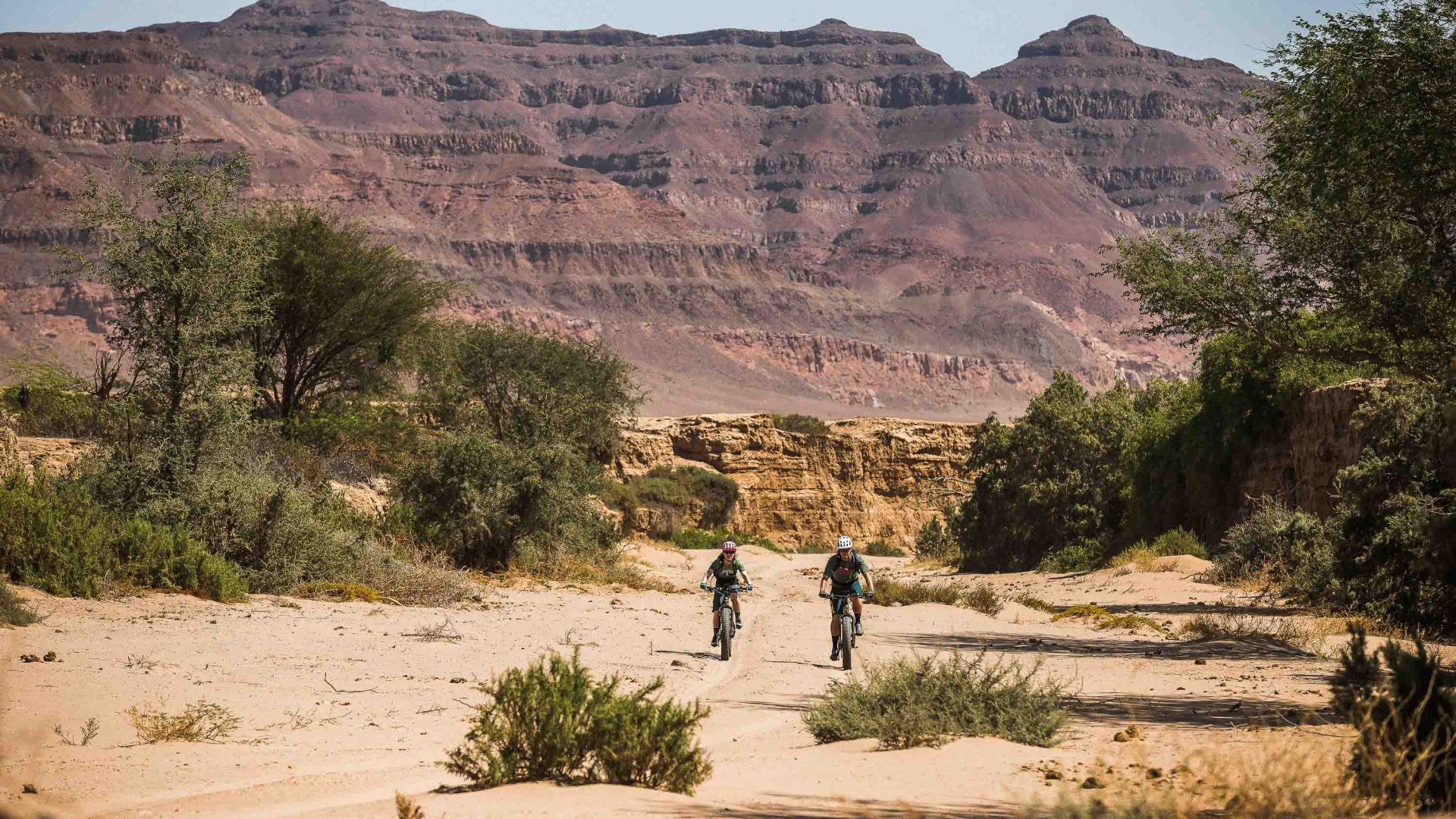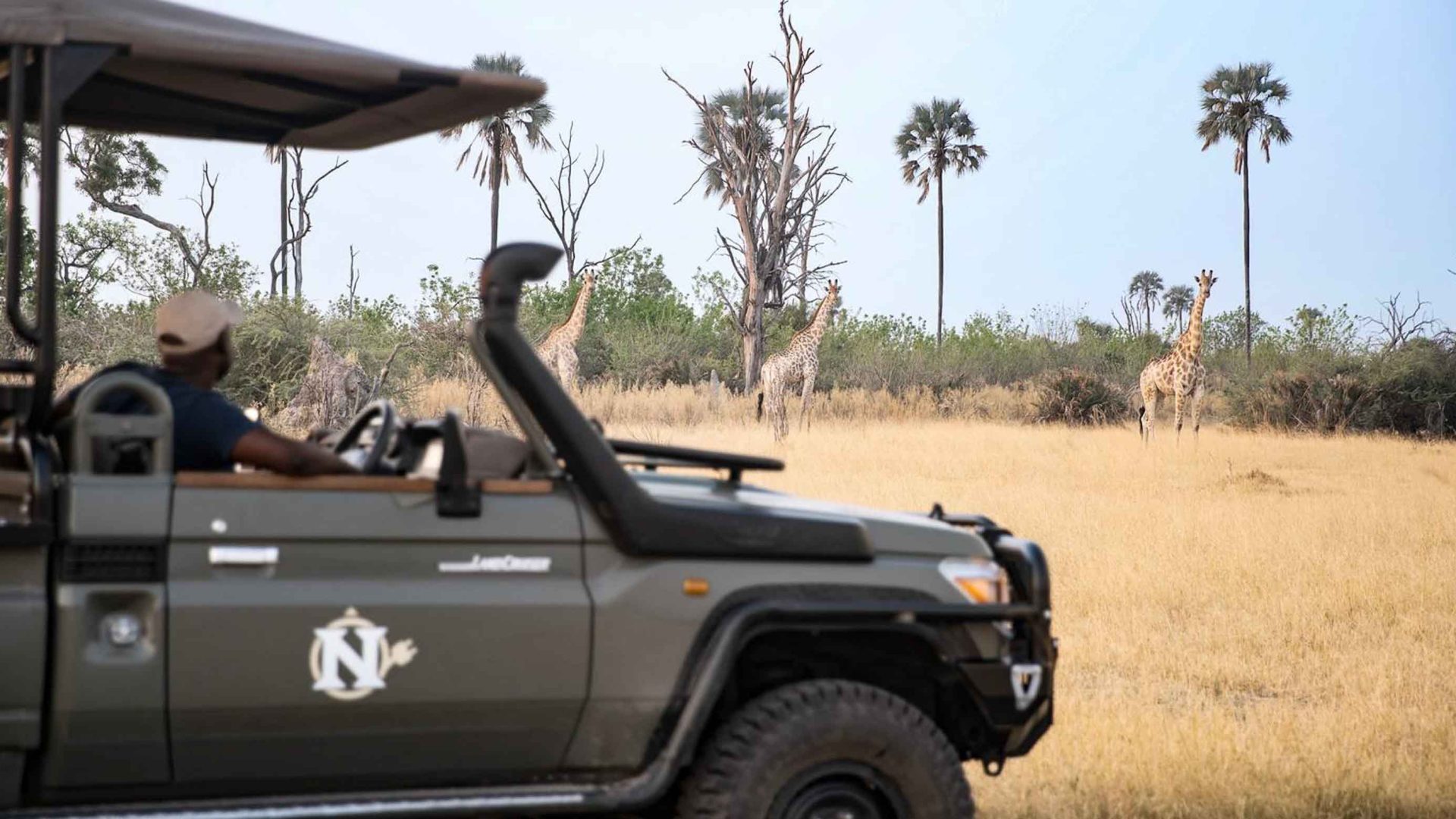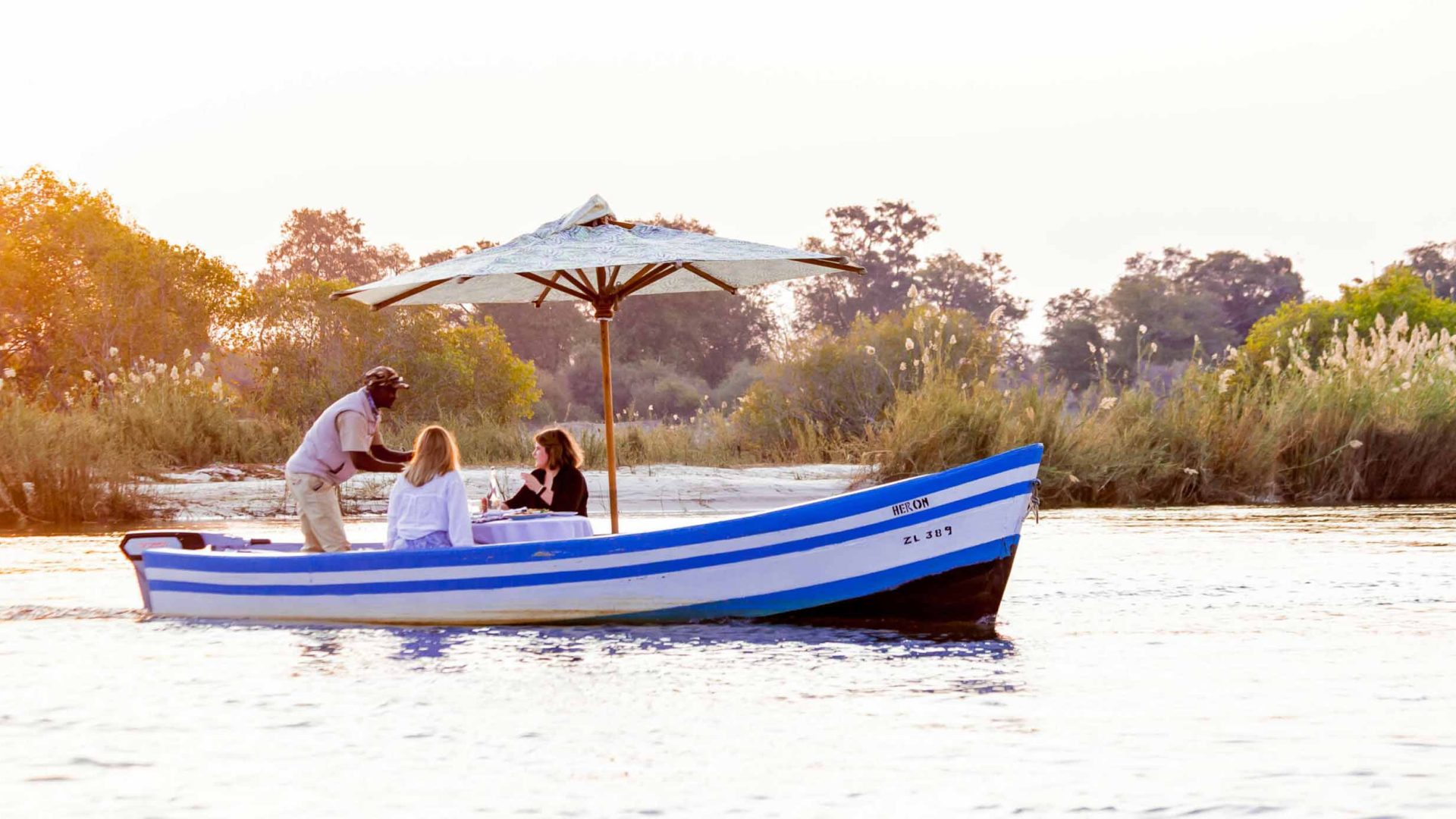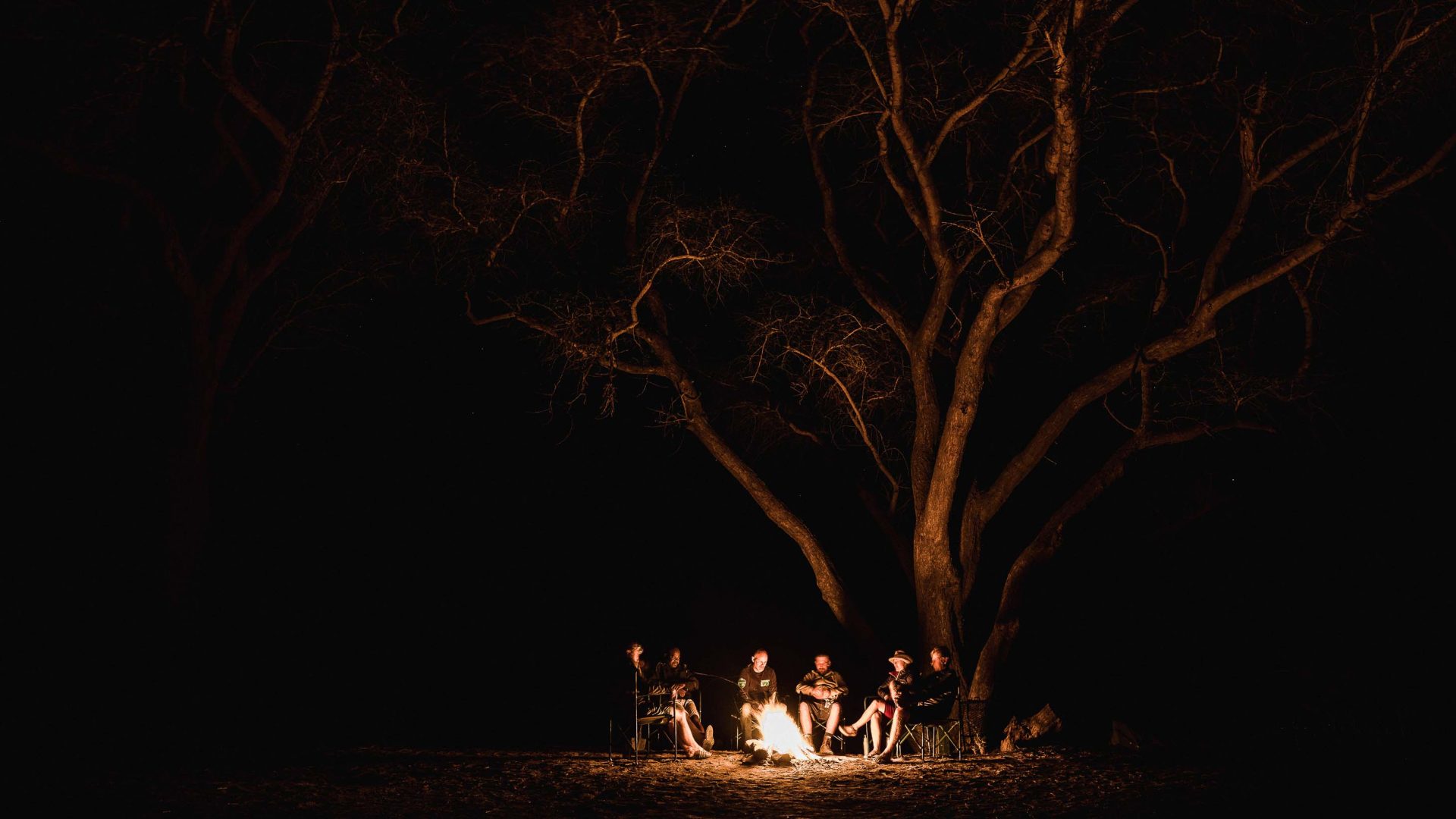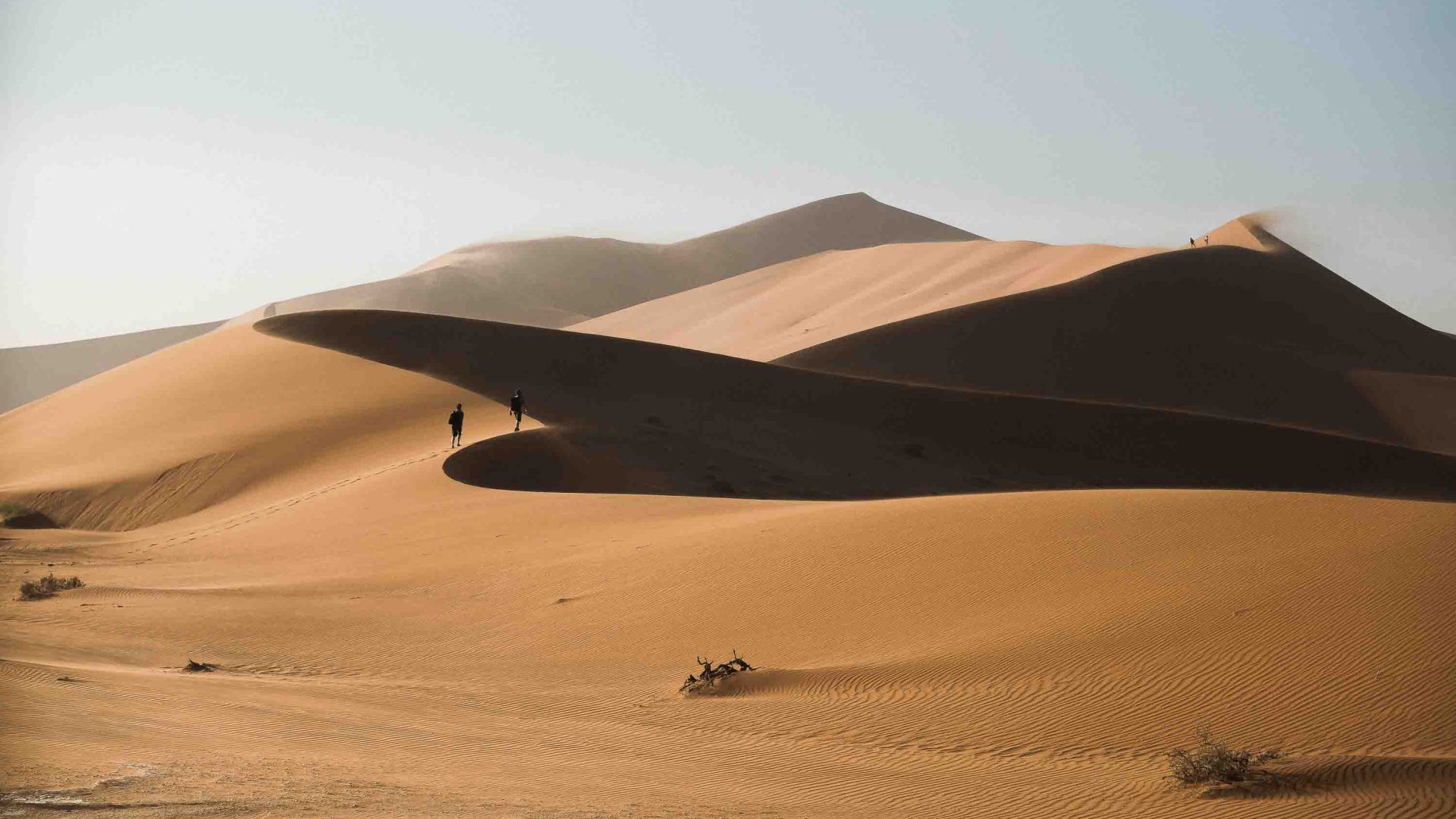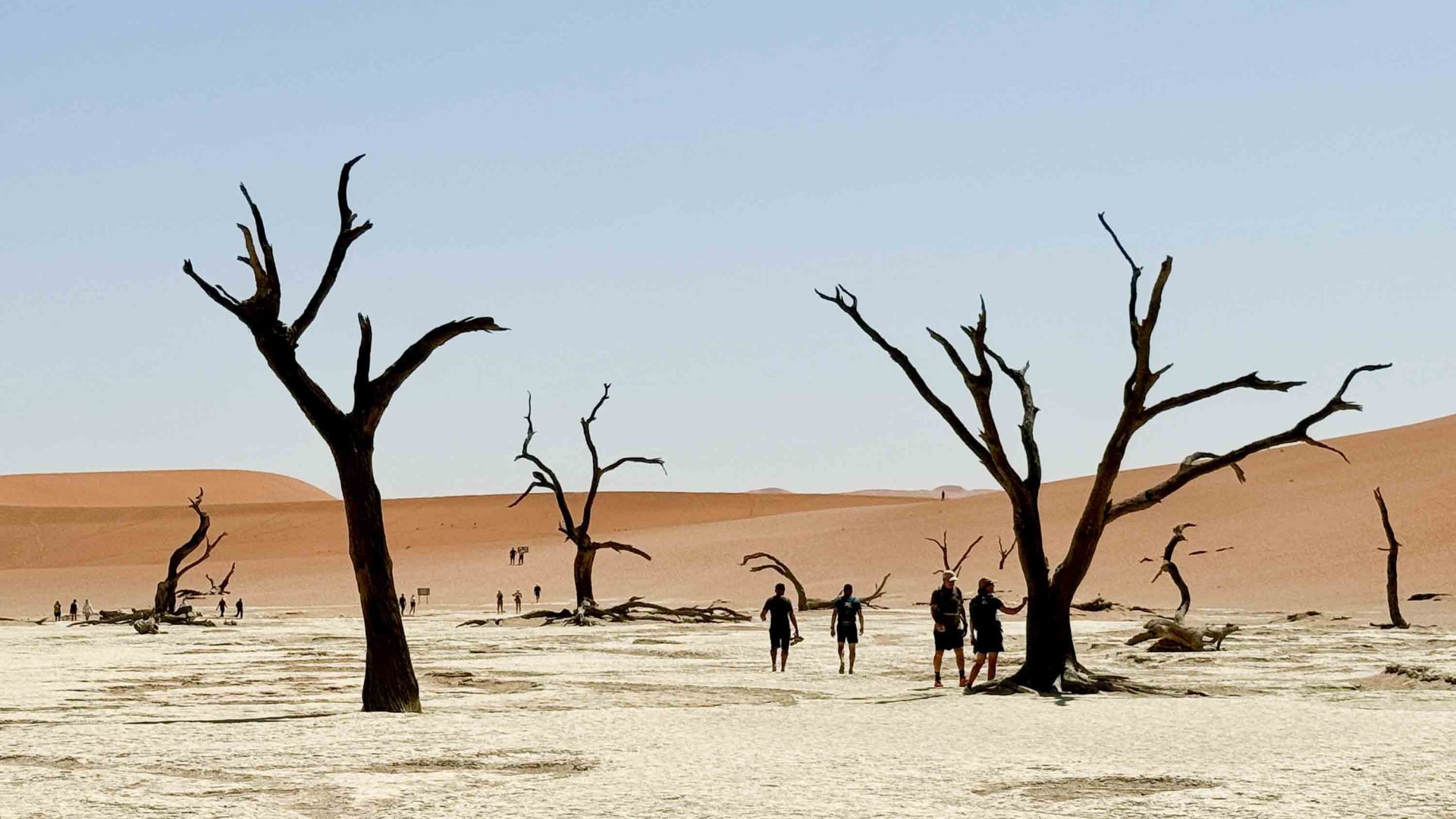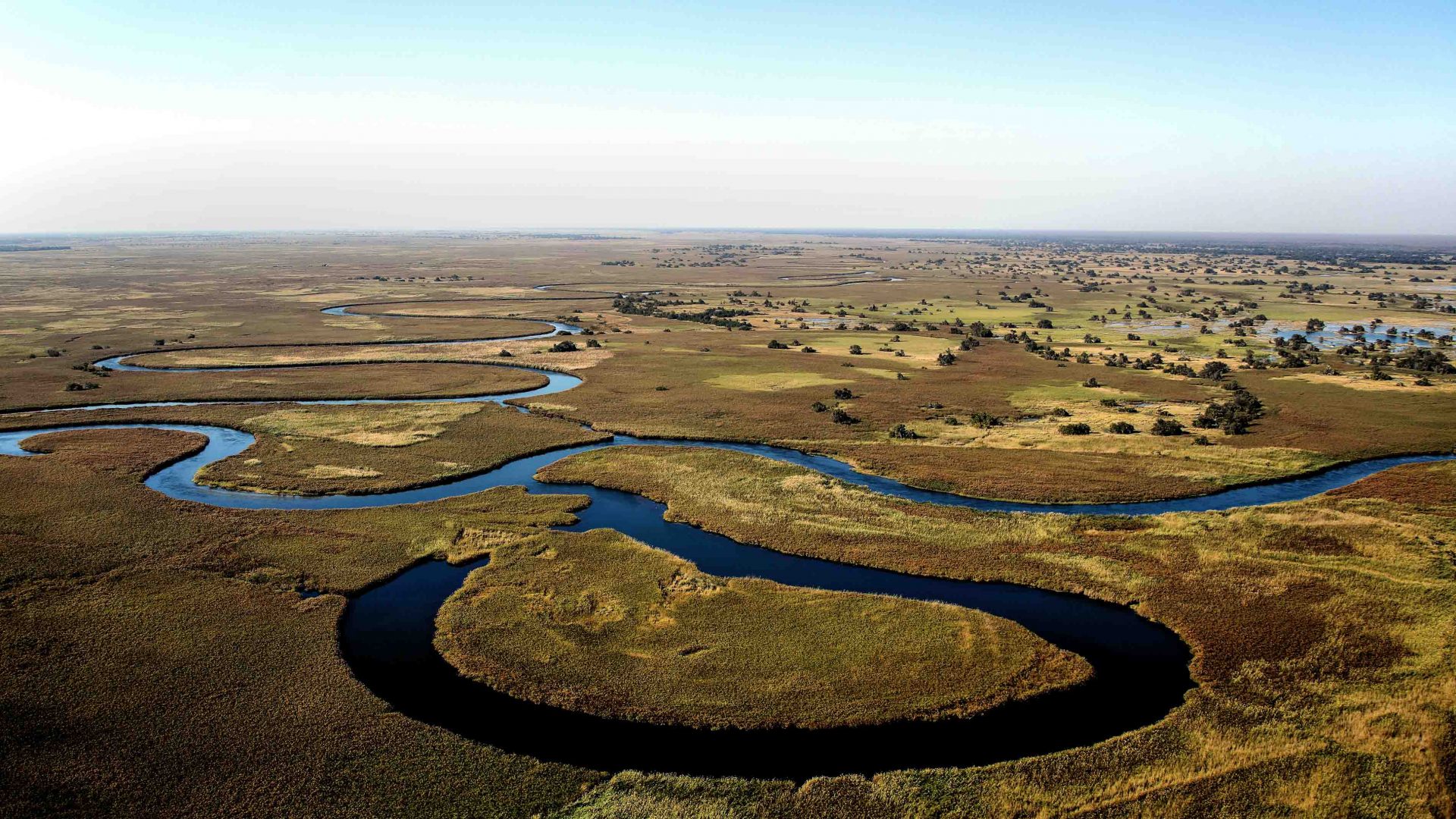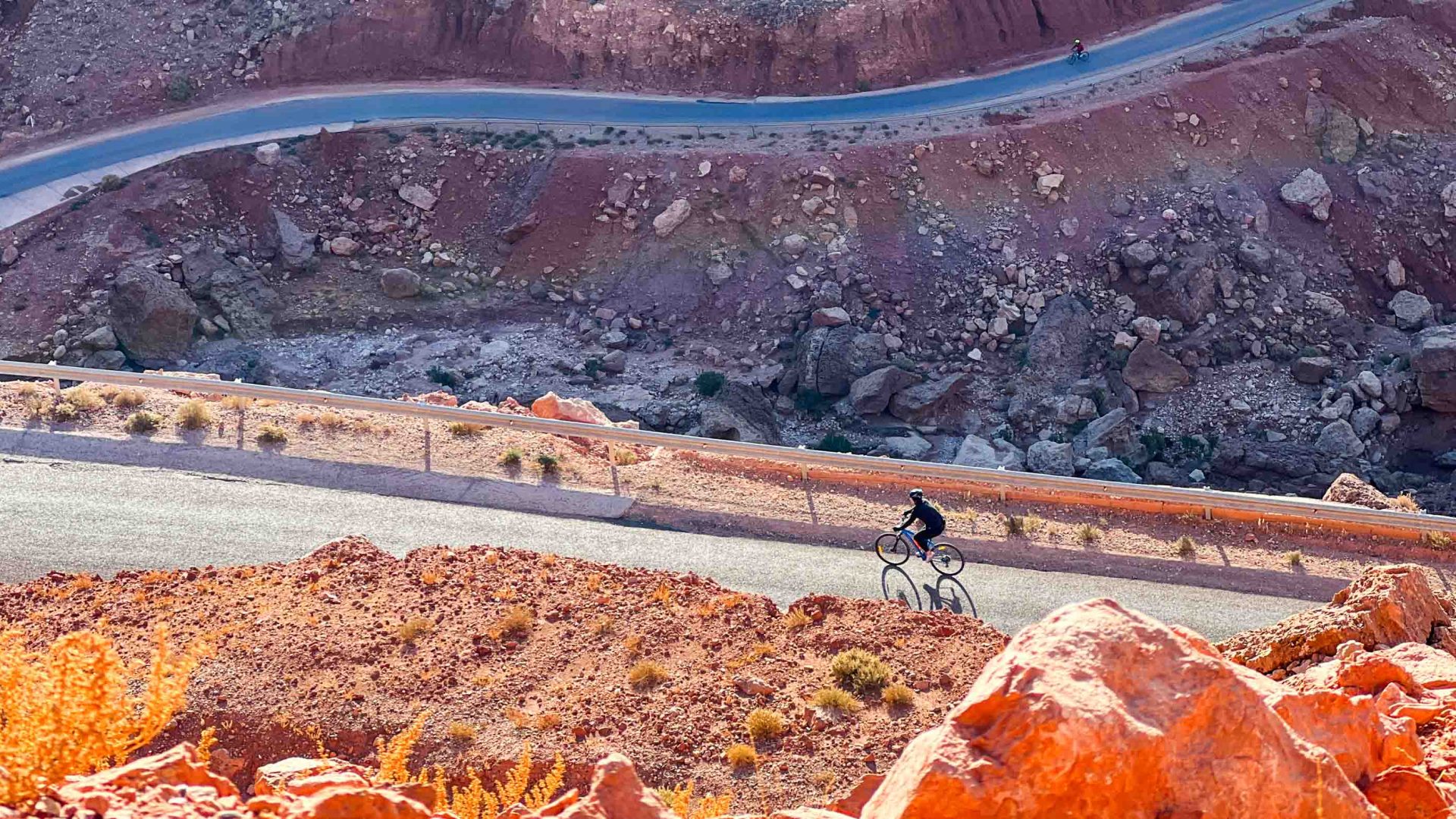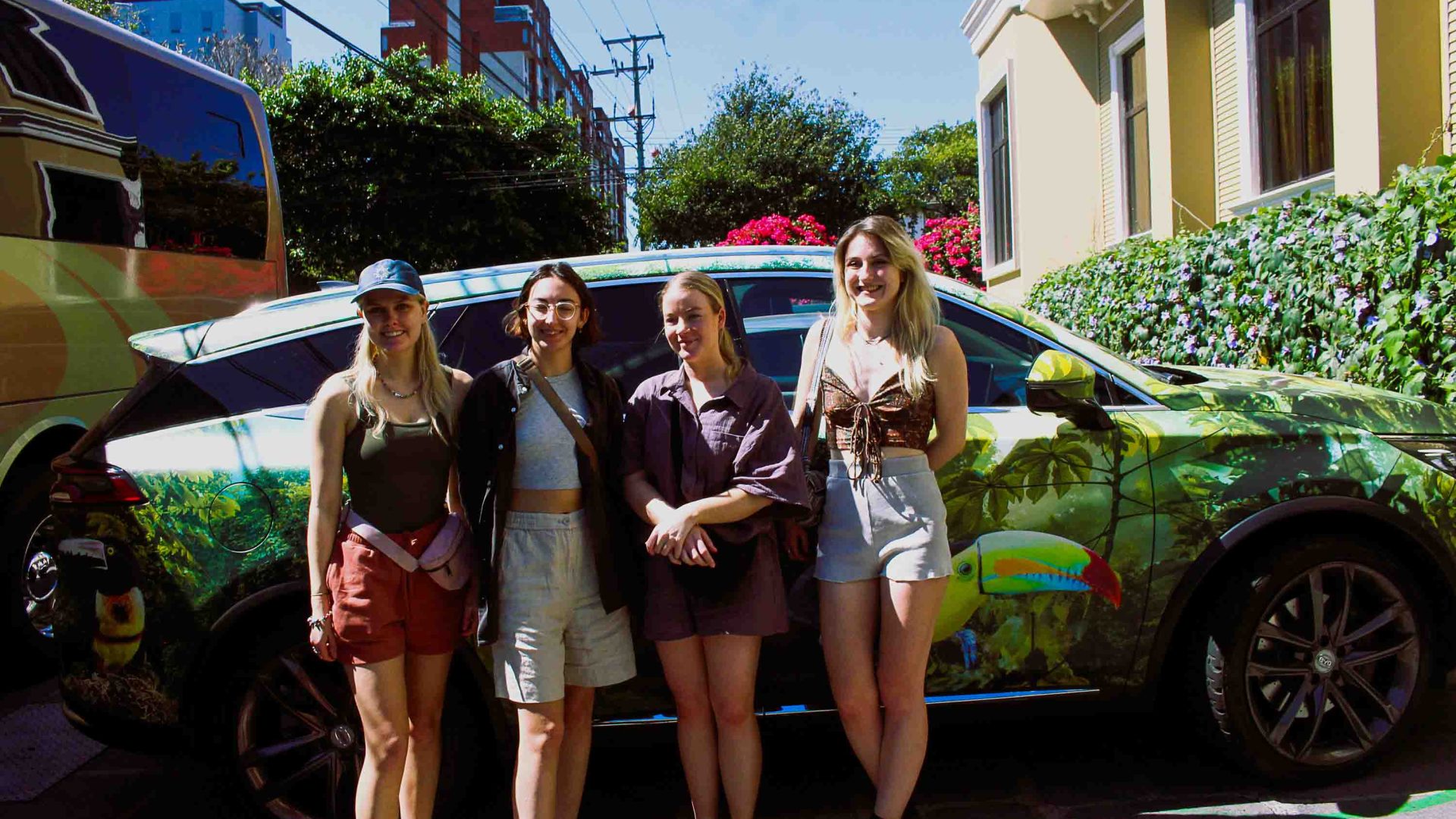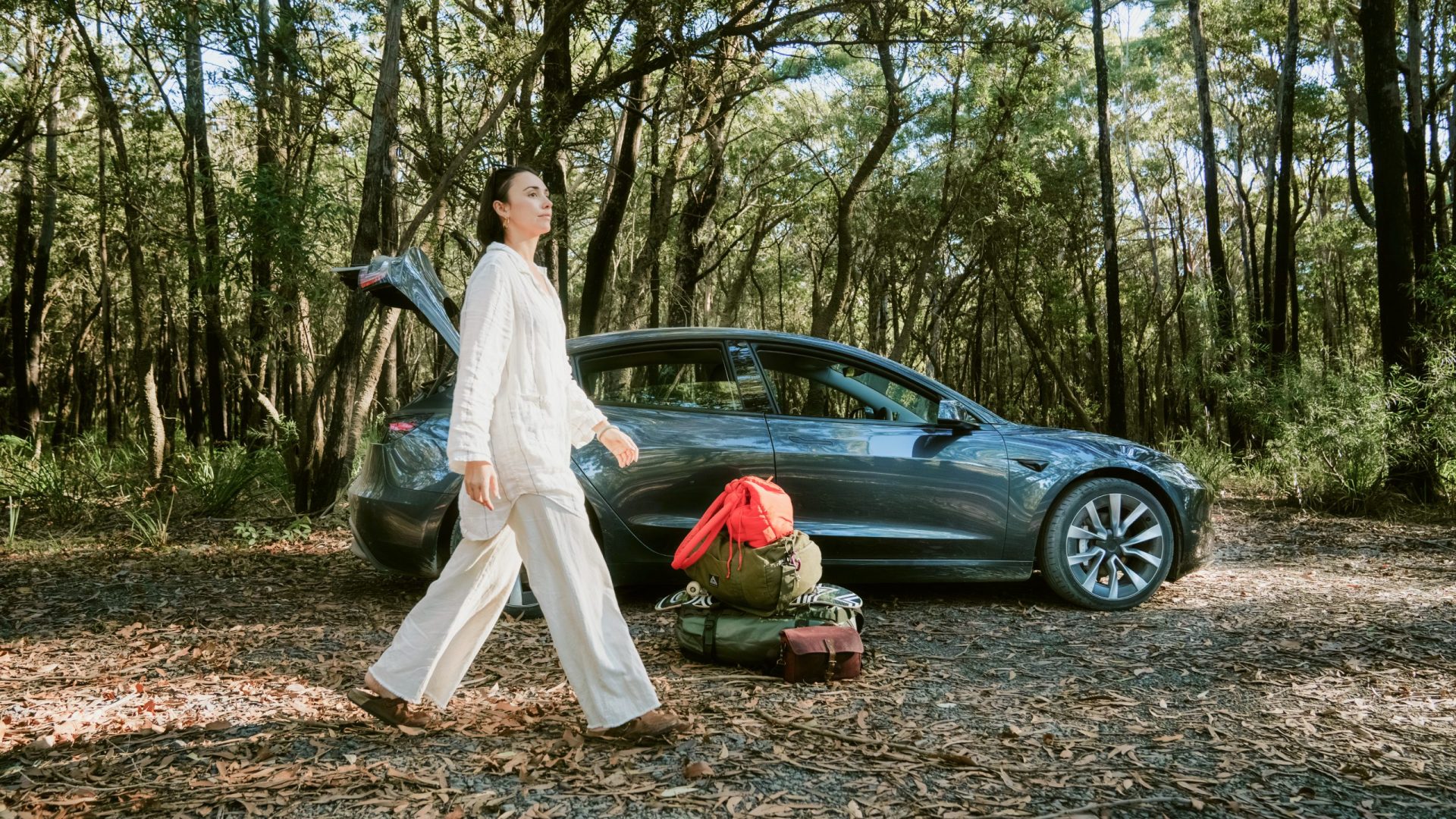Compared to traditional 4×4 vehicles, e-vehicle technology is still a long way off from coping with the distances, terrain and water crossings of the Namibian terrain, explains Meier. We board a conventional 4×4 for the final day of our Namibian safari adventure to explore Etosha National Park, where, due to the abundant wildlife, bikes are not allowed.
Etosha, which occupies an area larger than Slovenia, is home to 114 mammal species and more than 400 recorded birds. Its most striking feature is a 75-mile (120-kilometer) long, nutrient-rich salt pan that its website claims can be seen from space. Plants are so sparse on this stark bleached plain that the teeming wildlife looks almost hallucinatory. This is the place of David Attenborough documentaries, where layers of precious species—elephant, giraffe, zebra, wildebeest, impala—peter out to specs on the horizon.
It’s also where we see a lioness dipped behind the crusted edge of a waterhole depression, waiting for springbok to get too close. It’s where a male lion is unceremoniously dethroned when it is shooed away by an elephant. It’s where two jackals tumble in an explosive playfighting ball of dust. And it’s where we finally see a black rhino, mooching through a rare swathe of low scrub, gently grazing, with her baby in tow.
I’m completely lost in the moment until mum is distracted by the familiar four-wheel-drive jostle forming behind us. Our time is up and our jeep abruptly wretches into life. Bumping away, tender sit bones take my mind back to the bike: Despite Etosha’s remarkable chock-a-block diversity, nothing compares with rolling in nature on two wheels alongside even the most common antelope. And if seeing desert elephants plodding freely was the only wildlife event in the whole 10 days, it would’ve been enough. The emotion of the moment is forever etched in my memory, along with their remarkable resilience and survival story.
